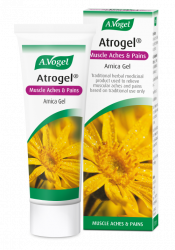What causes the noise?
Escaping gases: The synovial fluid present in the joints acts as a lubricant and contains oxygen, nitrogen and carbon dioxide. When a joint pops or cracks the joint capsule is stretched causing gas to release quickly.
Movement of joints, tendons and ligaments: When a joint moves, the tendon’s position changes and moves slightly out of place. A snapping sound can occur as the tendon returns to its original position. Your ligaments can also tighten as you move your joints resulting in a cracking sound and most commonly occurs in your knees or ankles.
Loss of cartilage: Arthritic joints tend to make more noises as the loss of smooth cartilage means the bones rub together on a rougher, more unstable surface. The older you get, the more noise your joints can make, because some of your cartilage wears away as part of the normal aging process.
Ligaments: Ligaments are fibrous tissues that connect two bones at a joint. Tight ligaments are prone to popping when they are suddenly moved, this sometimes results in short-lived pain in the area or sometimes you may not experience it at all. Tearing of the ligament can also be a cause of this noise.
Tendons: Tendons are fibrous tissues that connect muscle to bone and can also cause popping noises around a joint. This is most commonly found in snapping hip syndrome which causes a snapping sensation when the hip is flexed and extended.
Scar tissue: After joint injury or surgery, scar tissue, known as adhesions, is formed by the ligaments which are more prone to popping and cracking.
Frequency of the noise
A popping that occurs only once is sometimes a result of injury to the joint; causes of this type of popping include ligament strains or tears, tendon strains or tendon tears, bone fractures and joint dislocation. Repeated joint popping can be caused by harmless events, such as knuckle cracking but can also be caused by a more serious joint condition, such as a cartilage tear or degenerated cartilage from arthritis (osteoarthritis). Joint sounds can come and go, depending on how you position your body when you sit and sleep, and how you use your body when you move.
Exercise and cavitation
Repetitive exercises, such as lifting weights, push-ups, or squats, can sometimes cause a clicking or soft snapping sound each time you bend your arm or leg. This sound usually implies that a muscle is tight and is rubbing and causing friction around the bone.
Tendons rubbing over the bone can also cause this sound, in that case, gentle stretching and moving the area more mindfully can reduce the amount of popping. The noisiest joint is usually the shoulder because it is one of the joints with the most amount of mobility and range of motion.

When you crack your knuckles, the sound is coming from the compression of nitrogen bubbles that naturally occur in the spaces of the joints. Cracking is the sound of gas being released from the joint, an action called cavitation. The sound is not a cause for concern. Joint cavitation starts in the synovial joints which are the joints in the body which allow movement such as the knees, elbows and knuckles. A change in pressure to the capsule surrounding the synovial fluid often results in a popping noise.
Snap, crack and pop – what’s the difference?
Are all noises from our joints one and the same? Not necessarily…
Clicks or snapping
Repetitive clicks can often indicate that certain connective tissues are out of alignment or potentially damaged.
Ripping or tearing
This is definitely one noise to watch out for! Ripping and tearing noises often signal that we’ve torn a muscle or injured ourselves in some way, especially if this noise is accompanied by pain, swelling or bruising.
Popping
Possibly the most common of joint noises, popping is most often caused by cavitation, which is sound made from rapid release of gases in a cavity surrounding the synovial joints.
Why does it feel good to crack our joints?
When you pop a joint a stretch occurs in the joint capsule which results in relaxation of the surrounding muscles meaning that it feels particularly good in those tight or stiff places! This is also a good indication of where you might be tight in the body. Another theory suggests that popping a joint releases natural painkillers (or endogenous opiates) in the body.
Are these noises bad for our joints?
There is little evidence to support the theory that cracking your knuckles causes arthritis, however some believe that repeatedly doing it can result in an increase in inflammation. It is also possible that overstretching (or hyperextending) at the joint can impair motor control over time.
Cracking knuckles does not appear to cause or worsen arthritis, but, at least one study has found that it can soften the grip and lead to soft tissue swelling. Overall, these pesky popping, cracking, creaking and snapping noises are sometimes annoying, but they usually are nothing to worry about.

What can I do to avoid popping?
Below I’ve listed a few easy tips to help you support the joint and avoid popping and cracking. For more tips why not check out my blog for 7 ways to keep your joints healthy and strong?
Motion is lotion
Cracking and popping joints is annoying, but as I mentioned above if there is no pain it usually isn’t a cause for concern. When it comes to the joints motion is lotion. The more you move the more the synovial fluid in the body moves and lubricates the joints. If you spend most of your days and time sitting your joints are more likely to be prone to creaking and shrieking! Strengthening and stretching the joints will help improve mobility and reduce tightness and, as a result, prevent popping from occurring.
Eat healthy
What we eat can impact how our joints feel. Foods such as alcohol and excessive consumption of red meats can lead to an inflammatory response in our body, and therefore our joints. On the other hand, we can eat nourishing foods that will support and help our joints, preventing inflammation and pain. Not sure where to start? Check out my blog to learn more about the foods that you should and shouldn’t be eating for joint pain.
Keep hydrated
Cartilage is approximately 60% water and kept lubricated by our synovial fluid. When we are dehydrated, our production of synovial fluid is restricted and therefore increases our risk of cartilage deterioration. Preventing cartilage deterioration will help to keep the surface area of the joints smooth and therefore prevent any cracking caused by a rough, uneven surface area.
1 https://gmb.io/joint-noises/
2 https://www.medicalnewstoday.com/articles/259603.php








